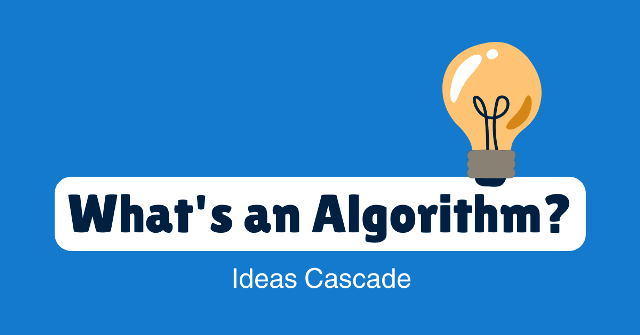Artificial intelligence algorithms are the backbone of modern technology from smartphone assistants to self-driving cars. An understanding of how these algorithms function is important to fully embrace how machine learning and data-driven decision-making actually work. This guide is intended to be a slight demystifier of AI algorithms learning about their types, use, implementation and the tools that are built to enable their implementation.
If AI evolves with each passing day simultaneously the applications of such algorithms to revolutionize industries are multiplying at an exponential rate. These applications are endless from healthcare where it helps in performing diagnosis to finance where it constructs models that can predict data trends in the market.
Understanding AI algorithms enables one to learn about the mysterious motor that drives the latest innovations in autonomous systems, intelligent assistants and real-time language translations. This blog will ensure you walk through the fundamentals to the advanced techniques and make you ready to cruise through the AI future easily.
Understanding AI Algorithms The Building Blocks
The Essence of AI Algorithms
Essentially AI algorithms are collections of instructions or rules that allow machines to carry out tasks generally requiring intelligence of a human nature. Examples of these types of tasks would include learning from data, making predictions and identifying patterns in data. The quality of and design of the algorithm largely determines the effectiveness of an AI system.
The first example is supervised learning predicting the future. Supervised learning involves training an AI model on a “labeled” dataset which means the input data is matched with the correct output. Then the model learns to predict the output when it is given new unfound data. Common algorithms in supervised learning include:
- Multiple Regression Analysis: This technique involves predicting continuous values which are to follow within set patterns if the required independent values are given.
- Logistic Regression: Employed for binary classification tasks like spam detection.
- Support Vector Machines (SVMs): These techniques are especially suited to solve both classification and regression problems.
- Neural Networks: These algorithms inspired by the human brain are for more complex pattern recognition tasks.
For example in filtering email messages supervised learning algorithms can make classifications for messages as either ‘spam’ or ‘not spam’ based on features discovered from the content of the email.
Unsupervised Learning Discovering The Hidden
Unsupervised learning models work with unlabeled data seeking to identify inherent structures or patterns without predefined categories. Key techniques include:
- Clustering: Grouping data points with similar characteristics. For example customer segmentation in marketing.
- Association: Identifying rules that characterize a large portion of data such as identifying which products are purchased together.
- Dimensionality Reduction: Reducing datasets to simpler datasets by combining the variables which might be done with Principal Component Analysis (PCA).
An example of unsupervised learning is market basket analysis when retailers look for patterns of which products are most frequently purchased so they can place them in the most advantageous inventory location.
Reinforcement Learning Learning through Mistakes
Reinforcement learning refers to a machine learning method that enables the agent to learn how to make decisions by taking actions and receiving rewards and/or penalties as feedback. Think of it like training a pet with treats for good behavior. Applications include:
- Building Artificial Intelligence: Creating agents that are capable of playing well at games such as chess or Go.
- Robotics: Learning by exploring and/or practicing tasks for a robot-made.
- Autonomous Vehicles: Teaching a self-driving car to navigate roadways using rewards for safe driving behaviors.
Deep Learning Dynamics Fueling Innovation in AI
Deep learning is a type of machine learning which uses two or more layers of neural networks hence ‘deep’ for fact-finding analyses from data of different types.
- Game AI: Designing agents that can play and master games like chess or Go.
- Robotics: Teaching the robot to learn a task by exploration and/or simple practice.
- Autonomous Vehicles: Teaching a self-driving car to navigate roads with welfare given to driving behaviors recognized as safe.
These models have revolutionized fields such as:
- Computer Vision is basically establishing machines to understand as well as process visual information.
- Speech Recognition converting spoken language into written text.
- Natural Language Processing (NLP) involves letting machines understand and generate human language.
- Convolutional Neural Networks have advanced in a big way toward image recognition technologies including facial recognition and medical imaging.
Natural Language Processing Teaching Machines to Understand Us
NLP is the study that deals with the interaction between computers and human languages. There are various techniques used in research:
- Tokenization
- Lemmatization
- Named Entity Recognition (NER)
- Part-of-Speech Tagging (POS tagging)
- Sentiment Analysis
- Text Classification
- Word Embeddings (e.g. Word2Vec, GloVe)
- Bag of Words (BoW)
- TF-IDF (Term Frequency-Inverse Document Frequency)
- Stopword Removal
- Dependency Parsing
- Modeling
- Chatbots and Conversational Agents
- Language Modeling
- Transformer Models (e.g. BERT, GPT)
- Sequence-to-Sequence Models
- Intent Recognition
- Contextual Embeddings
- Generating Text from Voice
- Text Summarization
These techniques are integral to applications like virtual assistants, translation services and automated customer support.
Tools and Frameworks at the Vanguard of AI
Developing AI models requires robust tools and frameworks. Some of the leading platforms include:
- It is TensorFlow: The open-source library developed by Google with an application on deep learning.
- PyTorch: A library made for executing deep learning applications and gained considerable attention from the users mainly due to its dynamic computation graph with intuitive syntax that matches the other libraries used for scientific computing
- Keras: A high-level API that runs over TensorFlow, simplifying the creation of neural networks.
- Scikit-learn: A Python library that provides a simple and efficient tool to the user for data mining and data analysis
This table is a survey of all of these tools:
| Framework | Developed By | Primary Use Case | Notable Features |
| TensorFlow | Deep Learning | Scalable, extensive community support | |
| PyTorch | Research and Production | Dynamic computation graph, flexibility | |
| Keras | Community | Rapid Prototyping | User-friendly, modular |
| Scikit-learn | Community | General Machine Learning | Simple and efficient tools |
Choosing the right framework will depend on the project’s necessary features; these include the ability to scale the ease of use and how complex the model is.
Breaking New Ground A Look Ahead at AI Algorithms
The landscape of AI algorithms is continually evolving. Emerging trends include:
- Artificial Intelligence in Data Analysis
- Machine Learning Algorithms
- Supervised vs Unsupervised Learning
- Predictive Analytics Tools
FAQ’s
What is an AI algorithm?
An AI algorithm is a systematic procedure for enabling machines to learn from observed data and to make informed decisions based on that learning.
What differentiates it from supervised learning?
In supervised learning input data are labeled while in unsupervised learning patterns are found from unlabeled input.
What makes NLP significant to AI?
NLP makes it possible for machines to comprehend, analyze, and produce responses in human language.
Looking to build AI models?
A selection of some of the best tools you might want to try are TensorFlow, PyTorch, Keras and Scikit-learn.
Do you have an interest in reinforcement learning?
It is one of the significant learning types used in many areas robotics, game playing and even driving.
Conclusion
AI algorithms are no longer just the stuff of science fiction; they’re the heartbeat of today’s digital evolution. Whether through using predictive analytic tools that foresee trends or deep learning systems for voice assistants algorithms meet real-world problems in ways that astonish everyone.AI is being built into big-data decision-making, transforming industries and performance processes into swifter, smarter and more reliable ones.
But with all this progress comes responsibility. As we build more advanced models, we must address bias in AI models, ensure transparency and maintain ethical standards. The future holds exciting possibilities, whether it’s chatbots and conversational agents transforming customer service or natural language processing examples like real-time translation bridging communication gaps. The journey from basics to cutting-edge innovations in AI algorithms is just beginning and staying informed is your ticket to being part of the transformation.



